
Woman who went from size 18 to size six shares surprising things ‘no one tells you’ about weight loss
A woman who went from a size 18 to a size six has shared some of the surprising things “no one tells you” about losing weight. Meg Stier, an actor and motivational speaker living in New York City who goes by the username @megmackenzies on TikTok, revealed some of the things she wishes she’d known “before [she] lost a bunch of weight,” such as that she would be cold “literally all the time,” in a video posted to the platform on Sunday. In the candid clip, Stier began: “[These are] things no one tells you when you go from a size 18 to a size six. And to be clear, there was nothing wrong with me when I was a size 18, and there’s nothing wrong with me at a size six.” Stier then reflected on the changes, many of which were negative, that she’s experienced as a result of her weight loss, with the TikToker revealing that, in addition to constantly being cold, she’s realised that “losing weight didn’t solve all of [her] problems,” there are days where she liked her body more when she was “bigger,” and that there’s a “lot of skin”. “I’m literally cold all the time. I’m just cold, always,” Stier said, before telling viewers: “Some days, I liked my body a lot more when I was bigger.” According to Stier, she’s also found that “people treat you differently” when you lose weight, and “skinny privilege is a thing”. “People started to respect me a lot more when I lost weight, which is just disgusting,” she continued, before moving on to some of the physical changes. “There’s a lot of skin. There’s a lot of skin,” she said. @megmackenzies It’s a learning curve #nyc #bodypositivity #weightloss #bodyacceptance #broadway #lifestyle #performer ♬ original sound - Meg Mackenzies Stier said she’s also found that her weight loss has become “the main topic of conversation” everywhere she goes. “Instead of my successful career, my education, or anything else about me,” she said. The TikToker concluded the video with a final surprising change to her body, with Stier expressing her surprise to find that her feet got “smaller” after losing weight. “My feet got smaller. I’m almost an entire shoe size smaller than I was,” she said, before adding: “Make it make sense.” In the caption of the TikTok, which has since been viewed more than 2.8m times, Stier acknowledged that her weight loss has been a “learning curve”. The video has resonated with viewers, with many praising Stier for talking candidly about the topic, while others shared their own similar experiences with weight loss. “Size 18 to two here. You forgot jewellery, rings and watches had to be resized. But yes to everything else!!” one person wrote, while another said: “Everyone thinks it’s so weird when I say my feet shrunk when I lost weight!! Always cold here too!” “I have literally experienced ALL of this! I went from a 22 to a two. So. Much. Skin.” someone else wrote. Many viewers also revealed they can relate to Stier’s experience with “skinny privilege,” with one person writing: “Girl same. I went from a size 20 to a size four. I RELATE. The skinny privilege blew my mind.” Another person wrote: “It is fascinating how I was ignored in stores when I was heavy but greeted enthusiastically when thin.” In a follow-up video, Stier opened up more about the concept of “skinny privilege,” with the TikToker sharing examples of the ways she is treated now as a size six versus when she was a size 18. @megmackenzies Anyone else experince these things? #bodyacceptance #nyc #bodypositivity #performer #lifestyle #weightloss ♬ original sound - Meg Mackenzies After clarifying that the video was not an “attack on skinny people,” Stier said that “skinny privilege” has meant that “people look me in the eye when they talk to me,” and that she can buy clothes in her size at any store. According to Stier, she’s also noticed a change in how people react when she speaks. “When I speak, people tend to listen more,” she said, before adding: “Well, I’m a woman, so men still talk over me, but, in general, people listen to me more than when I was larger.” Stier also revealed that she began to experience success in her career “the moment [she] lost weight,” despite not becoming “more talented, smarter or better at [her] job”. “I just looked different,” she said. The TikToker said she is no longer “judged” by what food she orders in a restaurant, or when she eats in public, and can go to the gym without others giving her a “‘good for her, she’s trying’ face”. “People considered me unmotivated, unhealthy and generally just lazy because I was bigger,” Stier said, before adding: “Those are three words that no one would ever use to describe me now and my lifestyle really hasn’t changed that much.” In the video, Stier then acknowledged that there is a “serious bias against fat people” that is “hard to fully grasp” unless you’ve “lived on both sides of the spectrum”. “Skinny privilege is a thing and even I find myself taking advantage of it. We need to change the way we view people because fat doesn’t mean bad and skinny doesn’t mean good,” she said. “People are just people. Their actions and their intentions are what make them good or bad, not the way they look.” Speaking to The Independent about her decision to make the initial TikTok, and whether she expected the viral response, Stier revealed that she has created the video “so many times over the last few months but never posted it because [she] didn’t want to be judged”. However, Stier was ultimately encouraged to share the video after seeing the number of people on TikTok “struggling with body acceptance and weight loss”. “After seeing so many people on TikTok struggling with body acceptance and weight loss I figured it would be worth sharing!” she explained. In regards to the viral reaction to the video, Stier said she was “most shocked” by the number of people the TikTok resonated with. “What I am most shocked about is how many people are saying ‘YES! ME TOO!’ It’s a conversation that has been needed for a long time and I’m grateful the online community has been so positive in letting me join that conversation,” she said. As for what she hopes viewers take away from the video, Stier said she wants to impart a “sense of community and honesty”. “It’s SCARY to talk about your own body on the internet. We spend so much time being told not to post things that don’t show us in a positive way (Photoshop, bad angles, no makeup etc.) But I want to encourage people to share the good and the uncomfortable,” she said. “Making these conversations more normal is how we stop the negativity that is constantly being thrown at people for the way they look or the number on the scale.” Read More Amy Schumer says she stopped taking Ozempic because of side-effects I tried anti-bloating pills for two weeks, and now I know the gassy truth Influencer calls out advertisements for weight-loss drugs in New York City subway stations: ‘Dystopian’ Schoolboy almost dies from swallowing magnets for TikTok challenge Woman shares honest review of New York City apartment TikTok mom slammed after making 5-year-old son run in 104 degree heat
2023-06-14 04:59
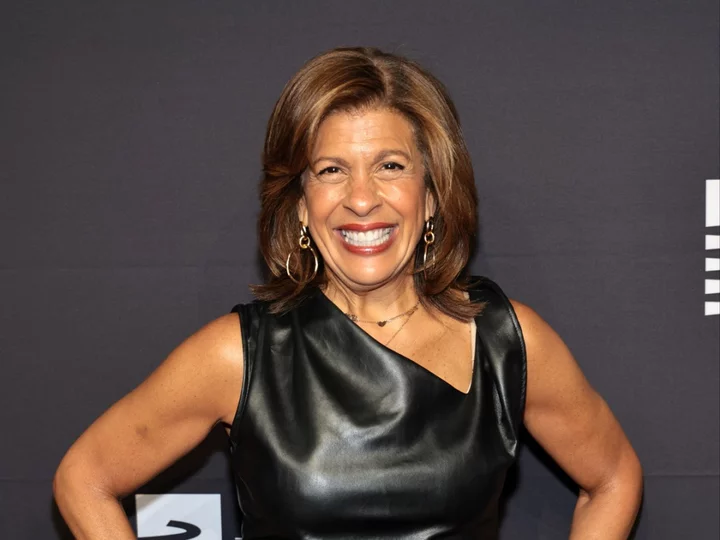
Hoda Kotb, 58, admits she ‘sometimes’ worries if she’ll see her daughters get married
Hoda Kotb has opened up about her fears of ageing and missing out on parenting milestones as she raises her two daughters: Haley Joy, six, and Hope Catherine, four. The 58-year-old NBC anchor discussed her anxieties about getting older during a recent episode of Bethenny Frankel’s Just B podcast. While speaking to the entrepreneur and former Real Housewives of New York City star, Kotb detailed her approach to parenting as an older mother to young girls. “I do have it sometimes,” Kotb said, when asked by Frankel if she has “anxiety” about ageing. “My dad died when he was 54, 55. I always think that the foundation he laid down was good for me. It helped me in my life.” Kotb was a junior in college at Virginia Tech when her late father, Abdel Kotb, died of a heart attack in 1986 at age 51. The Emmy-winning journalist became a first-time mother in 2017 when she adopted her eldest daughter Haley with ex Joel Schiffman. However, Kotb admitted that she “sometimes does the math” when thinking about being present for her daughters getting married or having children of their own. “I look at my mom, who’s 86, and I think to myself, ‘OK, what’s the difference here between me and her? 30 years. OK, that’s kind of good,’” Kotb said. “So I add 30 to Haley and I add 30 to Hope. And I think to myself, won’t that be spectacular? I can do that.” The Today host added, “Wouldn’t that be amazing? Do I get to see them get married? Maybe. That would be really good. Or do I get to see them have a child? Maybe. That would be really good.” While Hoda Kotb admitted that she sometimes has anxiety about watching her daughters grow up, she ultimately decided to not look at the future in a negative way. Rather, she explained how she chooses to focus on how “special” it would be to witness her daughters’ milestones. “I think about it, but I don’t think about it on the end of, ‘Oh, no, I won’t be able to…’ I would be delighted if all those things were possible, and I think that would be special,” she said. Kotb then recalled writing her mother’s age minus her age on the glass in the shower one day. “And I looked at the number and I was like,” she shared, clapping her hands. “What if you get that many years? That’s more than I got with my dad.” Meanwhile, Frankel, 52, opened up about her anxieties of getting older and missing out on moments with her 13-year-old daughter, Bryn. The Skinny Girl founder shared that it’s her daughter who tends to “do the math” on their age gap. “I watch her make the connection and then I watch her get distracted because it’s anxiety for her,” Frankel told Kotb. “We’re very close. It just keeps getting better, it’s so beautiful.” Elsewhere during the podcast, Hoda Kotb detailed the moment she learned she was going to become a mother for the first time. In the episode, the Today star shared the text she received from someone named Ashley at the adoption agency after her daughter Haley was born. The mother of two said that, after she saw the adoption agent’s number displayed on her phone, she took out a yellow pad of paper and wrote the time, 11:55. “This is the moment everything changes,” Kotb recalled thinking. “I knew it.” “And I took a deep breath and dialed the number, and I said, ‘Ashley?’ and she said two words to me. She said, She’s here.’” “I don’t know what birth feels like, and I bet it was amazing, but this was really close,” she added. Hoda Kotb adopted her second child, Hope Catherine, in April 2019. Earlier this year, Hope experienced health complications that caused her to spend time at the hospital. Upon returning to the Today show after a two-week absence, Kotb revealed that her then-three-year-old had been in the hospital’s intensive care unit. “My youngest, Hope, was in the ICU for a few days and in the hospital for a little more than a week,” Kotb told Today co-host Savannah Guthrie. “I’m so grateful she’s home. She is back home. I was waiting for that day to come. And we are watching her closely. I’m just so happy.” The journalist then expressed her gratitude for all those who helped her daughter and provided support for her family during the scary experience. “You know what I realised too, Savannah? It’s like, when your child is ill, the amount of gratitude you can have for people who helped you out,” she said. “So I’m grateful for the doctors at Weill Cornell, who were amazing and the nurses. And I’m grateful for my family and I’m grateful to friends like you who were there every single day. So I want to say thank you for that. I love you.” Read More Hoda Kotb reveals ‘terrible’ letter criticising her for being an older mother Hoda Kotb returns to Today show after three-year-old daughter Hope is discharged from hospital ICU Jenna Bush Hager discusses body image after revealing her grandmother once called her ‘chubby’ Keke Palmer says she faced ‘breast milk discrimination’ at airport Colin McFarlane diagnosed with prostate cancer 7 tips and tricks for hay fever relief
2023-06-14 03:21

Keke Palmer claims she faced ‘breast milk discrimination’ at airport: ‘Why is that not a crime?’
Keke Palmer has claimed she faced “breast milk discrimination” during an incident at a Texas airport. The 29-year-old actor and singer tweeted on Monday (12 June) about the alleged situation that occurred at an airport in Houston. “Breast milk discrimination at the Houston airport ruined my mood,” the Nope star tweeted. Palmer claimed that officials at the unidentified airport threatened to “throw out” 16 ounces of breastmilk, writing: “I should’ve popped my tit out right then because the discretion and comfort of pumping is thwarted with threats to throw out over 16oz my babies food?!?!!!” “Why is that not a crime??” the Hustlers star added. “I’M A MOTHER for crying out loud.” Keke Palmer welcomed her first child, son Leodis "Leo" Andrellton Jackson, with boyfriend Darius Jackson in February. Her tweet was met with sympathy from fans, as they shared their similar experiences of screening their packaged breast milk through Transportation Security Administration (TSA) in airports across the US. “I’ve had this issue in soo many airports,” one person claimed. “TSA really needs to get it together.” “Oh hell no! Pumping is not an easy task,” another said. “16oz is a lot ! That is not right at all!!!!” Other people claimed that it was “illegal” for TSA to dispose of a passenger’s breast milk or baby formula, tweeting: “That’s so illegal. I work for a major airline and breast milk and anything concerning babies’ food and other items they need are always supposed to be an exception.” According to TSA guidelines, breast milk or formula in quantities greater than 3.4 ounces or 100 milliliters are allowed in carry-on baggage. Formula, breast milk, toddler drinks, and any other food for babies or toddlers are considered “medically necessary” liquids, and a child or infant doesn’t need to be present for a parent to bring breast milk or formula on their flight. However, travellers are recommended to remove the liquid from their carry-ons to be screened separately from the rest of their belongings. The agency suggests that formula and breast milk should be transported in clear, translucent bottles and not plastic bags or pouches, which may require additional screening. Ice packs, freezer packs, frozen gel packs and other accessories required to cool formula or breast milk is also allowed in carry-on bags. While the TSA states that there’s no known “adverse” effects of drinking breast milk that’s been screened by an X-ray, parents are still allowed to tell TSA agents that they don’t want their baby’s milk X-rayed, and will undergo additional screening procedures instead. Meanwhile, the US Food and Drug Administration (FDA) has classified breast pumps as a medical device, and are therefore permitted as a carry-on item. While TSA didn’t specify whether it’s “illegal” to throw away breast milk at airport security, agents are required by the Bottles and Breastfeeding Equipment Screening Act (BABES Act) to provide ongoing training to ensure TSA staff receives consistent training related to traveling with breast milk, formula, and infant feeding equipment. In October 2021, US Olympic gymnast Shawn Johnson alleged she was “groped” and publicly humiliated by a TSA agent while attempting to travel with breast milk. The athlete described the incident as “one of the worst experiences,” on her Instagram Stories, where she wrote: “We as mamas have a duty to our babies and a right in this world to carry breast milk through security”. In the post, which included a photo of clear plastic bags full of breast milk, the mother-of-two claimed that it was against her rights for the unidentified TSA agent to “publicly humiliate” her by having her prove the liquid she was travelling with was breast milk. “To then be groped and yelled at in public was excessive,” she continued. “I know you were doing your job… but so was I.” The Independent has contacted the Transportation Security Administration for comment. Read More Keke Palmer celebrates her postpartum body after giving birth to son: ‘Hips? Never had ‘em’ Keke Palmer welcomes first child with boyfriend Darius Jackson and defends son’s name Blake Lively shares photo of herself pumping breast milk after Ryan Reynolds addresses absence at Met Gala Colin McFarlane diagnosed with prostate cancer 7 tips and tricks for hay fever relief Should you sleep naked? Heatwave myths debunked
2023-06-14 02:23

Rash Judgment: A 68-Foot-Long Poison Ivy Vine is a Guinness World Record Holder
The finding was confirmed when the property owner broke out in a rash.
2023-06-14 01:20
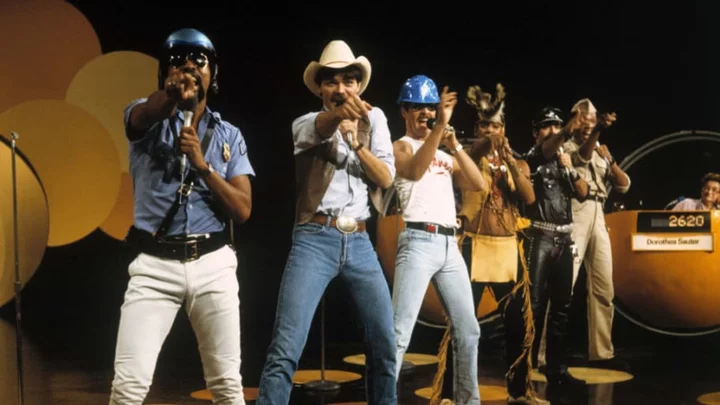
How Did the Real YMCA React to the Disco Song About It?
Everyone liked “Y.M.C.A.”—except the actual organization.
2023-06-14 01:20
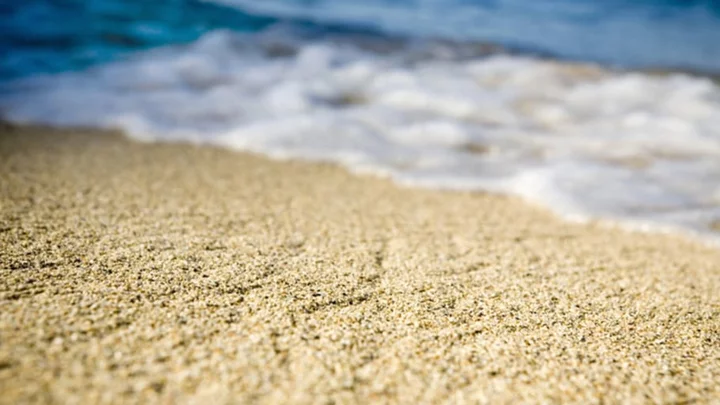
8 Granular Facts About Sand
Every summer at the beach, sand becomes an essential ingredient in the recipe for fun. But what the heck is it?
2023-06-14 00:23
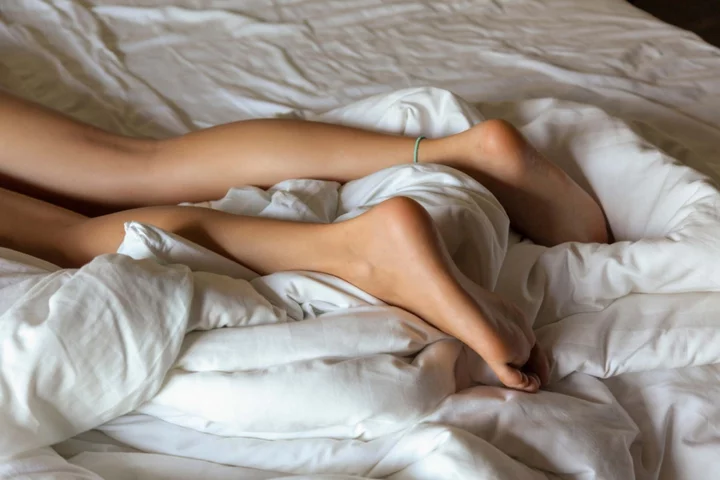
Should you sleep naked? Heatwave myths debunked
It’s safe to say summer has officially started. Temperatures are now firmly above 25C across much of the UK, the sunshine is hotter, noses are stuffy and the air is muggy, sometimes making it difficult to sleep. Keeping cool in a heatwave is a priority – but it also gives rise to various theories and myths on how to achieve this… Sleeping naked cools you down Sleeping naked seems like the easiest and quickest way to cool your body temperature down after being out all day. But this isn’t necessarily the case, according to Abbas Kanani, a superintendent pharmacist at Chemist Click Online Pharmacy. “Sweat collects on the body and remains there when we have no clothes on,” Kanani explained. “Although having less layers on the body can help you to feel more comfortable in the heat, wearing lightweight nightwear made from breathable fabrics helps draw sweat away from your body and makes you feel a lot cooler and more comfortable.” So what should you wear at night to keep cool? “Clothing made from natural fabrics like cotton or linen are breathable and absorbent,” Kanani recommended. “They will soak the sweat up off your skin and they let air through, which cools you down.” People don’t die from heat in this country The UK sun can feel different compared to when you are sunbathing and drinking cocktails on a beach in Barcelona – but that can catch people out. “The biggest myth is that the weather in the UK isn’t hot enough to be dangerous,” said Dr Adam Staten, a clinical director at One Day Tests and NHS GP. “Whilst we don’t have that many really hot days, when it is hot, it can be fatal. For example, during the heatwave last summer, hundreds more people died than normal for that time in the year.” Staten suggests we overcomplicate things when trying to keep cool. “Most measures are really simple and include common sense measures like keeping curtains drawn, keeping windows open or taking cool showers or baths.” Sticking to hot drinks will keep you cool Who else thinks drinking tea or coffee in hot weather will cool you down? For Staten, “One myth that seems to come up a lot is that hot drinks are better for cooling you down than cold drinks. I think the evidence actually shows that it doesn’t really matter – as long as you are keeping hydrated, your drinks can be hot or cold.” Pharmacist Kanani agrees with that final point. “Hydration is vital for keeping cool in hot temperatures. Drink plenty of fluids, especially water, to stay hydrated. Avoid excessive consumption of caffeinated or alcoholic beverages as they can contribute to dehydration.” You only need to wear sunscreen when the sun’s out Another common misconception is thinking that you can’t get sunburnt when it is cloudy outside. “This isn’t true,” Kanani said. “Although it’s less likely than when you’re out in full sunshine, clouds don’t block all of the sun’s UV rays.” It’s also why people either only apply sunscreen in the morning or none at all. “Many people think that when sunscreen is waterproof, it means they do not need to reapply it after swimming or sweating. It should be reapplied straight after you have been in water, towel drying, sweating or when it may have rubbed off.” Sunburn is something to be careful of. Staten said: “It’s really common and can actually be very severe both in the short term and for the longer term risk of skin cancer.” Read More Charity boss speaks out over ‘traumatic’ encounter with royal aide Ukraine war’s heaviest fight rages in east - follow live 7 hay fever hacks to ease your symptoms this summer The pests you really don’t want invading your garden and how to deter them How to take care of your mental health at festivals
2023-06-13 22:51
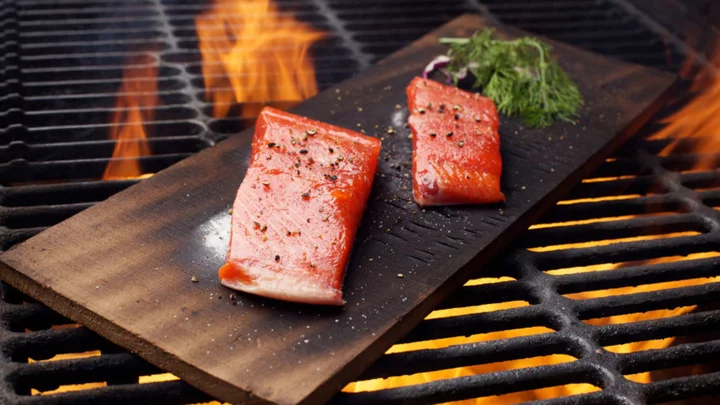
Everything You Need to Know to Start Grilling With Cedar Planks
A basic cedar wood plank is one the easiest ways to upgrade your grilling game.
2023-06-13 22:19
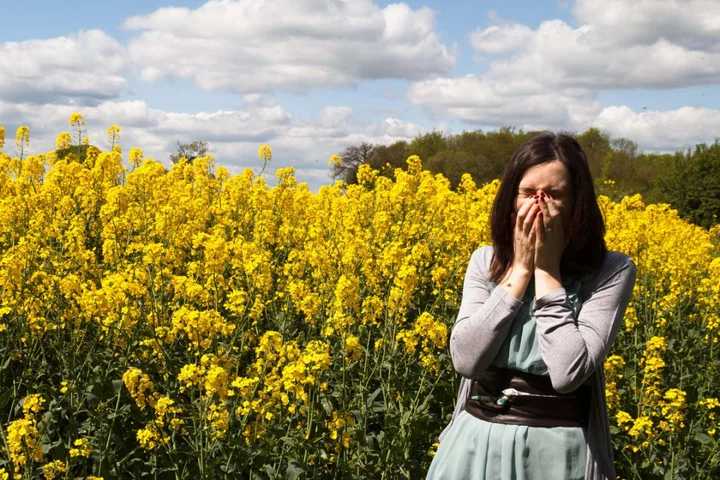
7 hay fever hacks to ease your symptoms this summer
According to health officials, people sought advice for hay fever symptoms once every three seconds on Sunday. And today, the Met Office predicted the pollen count would be “very high” in most of England and Wales.Hay fever is usually at its worst between March and September – and right now, thousands of people affected are desperate for a solution to their pollen-induced runny noses, itchy eyes and tickly coughs, and other irritating symptoms. The hay fever pages on the NHS.uk website reportedly received 122,650 visits last week alone. So, what can you do to help with hay fever symptoms? 1. Don’t rub your eyes “Red, itchy, swollen eyes are often a real problem for hay fever sufferers,” explained pharmacist Sid Dajani, from Golden Eye Eye Care. “As tempting as it is, don’t rub your eyes. Clean them free of pollen frequently, with cotton lint and cold water, and treat the symptoms immediately with eye drops or eye ointment containing propamidine isetionate.”2. Don sunnies and keep your clothes cleanReducing your exposure to pollen, however possible, can really help. Dajani added: “Wear wrap-around sunglasses to protect your eyes when outside, and have a shower when you get in from work and put your clothes straight in the wash to help remove all pollen. It’s also best to avoid drying clothes outside.”3. Think about your diet What you eat may have an impact too. GP Dr Nisa Aslam suggested: “Stick to an anti-inflammatory diet, with plenty of fruit and vegetables, beans, grains and oily fish, whilst limiting processed food high in fat, sugar and salt. Look for anti-inflammatory, antioxidant herbs, like chamomile, ginger, nettle and turmeric. These can be consumed in the form of supplements or beverages.”4. Protect your nostrilsDr Adam Fox, allergist and advisor to Clarityn, said: “Pollen balms such as petroleum jelly rubbed around the rim of the nostrils can help trap pollen before it enters the nose, and salt water nasal sprays help rinse pollen particles out of the nose, preventing them from sitting in there and causing more symptoms.”5. Keep the windows shut As tempting as it may be to fling windows open at this time of year, Dijani said: “Keep windows, including car windows, and doors shut. Venture out as little as possible. Towns and cities are no more friendly to hay fever sufferers than the countryside, due in part to more extensive ‘greening’ of urban areas.” 6. Prepare for the pollen count Checking to see when the pollen is particularly high can help you prepare. “If you know you have symptoms every year, then it makes sense to be prepared in advance,” said Fox. “If you require a nasal spray, then starting to use it before the season starts will make it much more effective. For adults, these can be brought over the counter, whilst children will need a prescription.” 7. Stay in when the count is really high And if symptoms are still really getting to you? “Avoid going outside when the pollen count is at its highest – in the middle of the morning or the early evening,” said Dajani.
2023-06-13 20:52

7 Facts About Lorraine Hansberry
By the age of 34, Lorraine Hansberry was already the author of two plays that had appeared on Broadway. She should have been on course for a long and successful career—but tragically, that wouldn't happen. Still, her legacy has endured.
2023-06-13 20:24

A Greenwashing Lawsuit Against Delta Aims to Set a Precedent
As tranquil instrumental music plays over gauzy images of nature, a woman’s voice-over begins. “Isn’t it a paradox,”
2023-06-13 19:45
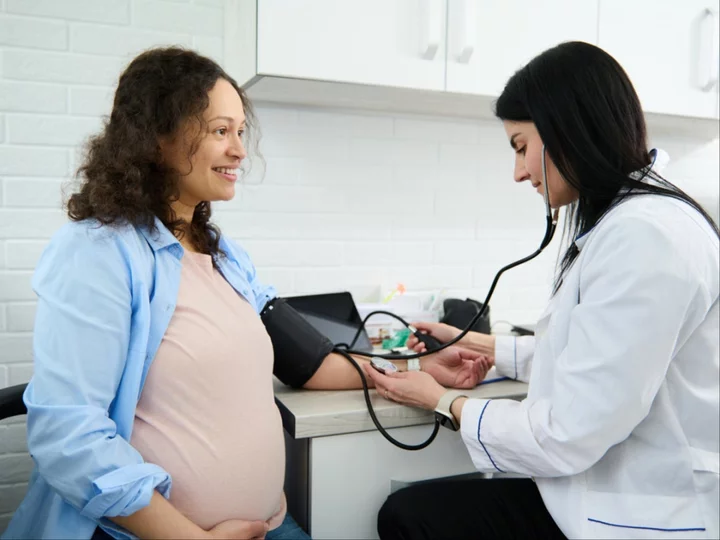
What is eclampsia and how rare is it?
Eclampsia is a rare complication of pre-eclampsia and can cause fits, seizures and strokes. The condition eclampsia describes the type of convulsion or fit – an involuntary contraction of the muscles – pregnant women can experience from week 20 of the pregnancy or immediately after the birth. What are the symptoms/ warning signs? Pre-eclampsia is a condition that affects some pregnant women, usually during the second half of the pregnancy (from 20 weeks) or soon after the baby is delivered. Early signs of pre-eclampsia include having high blood pressure (hypertension) and protein in your urine, according to the NHS. It’s difficult to notice the signs, but they can be picked up during routine antenatal appointments. Further symptoms of pre-eclampsia include a severe headache, vision problems, such as blurring or flashing, pain below the ribs, vomiting and sudden swelling of the face, hands or feet. How common are pre-eclampsia and eclampsia? Most cases of pre-eclampsia do not lead to serious problems or complications, but there is a risk that the mother will develop fits and seizures, called eclampsia, which can be life-threatening for the mother and baby. However, this is rare. According to the NHS, the earlier pre-eclampsia is diagnosed and monitored, the better the outlook for the mother and baby. Most women make a full recovery after having a fit, but they can put the mother and baby’s health at risk. According to the pregnancy charity Tommy’s. eclampsia is quite rare in the UK, with an estimated one case for every 4,000 pregnancies. What are the causes of pre-eclampsia? Though the exact cause of pre-eclampsia is not known, its thought to occur when there is a problem with the placenta – the organ that links the baby and mother’s blood supply. Who is affected by pre-eclampsia? A number of health conditions can increase your chances of developing pre-eclampsia, including having diabetes, high blood pressure or kidney disease before pregnancy. Having an autoimmune condition, such as lupus or antiphospholipid syndrome, or having high blood pressure or BMI, can also increase your chances of pre-eclampsia. A family history of the condition, being older than 40, or having more than 10 years since your last pregnancy can also increase your chances of pre-eclampsia. Expecting multiple babies, like twins or triplets, may also put a patient at risk. What are the treatments for pre-eclampsia? After being diagnosed with pre-eclampsia, a patient will be monitored closely by a specialist to see how severe the condition is. According to NHS guidance, the only way to cure pre-eclampsia is to deliver the baby, hence why monitoring the mother and baby is crucial until the child is delivered. Patients are often offered medicine to lower their blood pressure until the baby is born. Read More Tori Bowie: Pregnant US Olympic sprinter’s cause of death revealed Vegan family writes letter to neighbours requesting they close their windows when cooking meat Kelis addresses Bill Murray dating rumours for the first time How to take care of your mental health at festivals How to stop hay fever fast? Only one thing worked for me Jamie Foxx’s rep addresses conspiracy Covid vaccine left actor ‘paralyzed and blind’
2023-06-13 17:50
